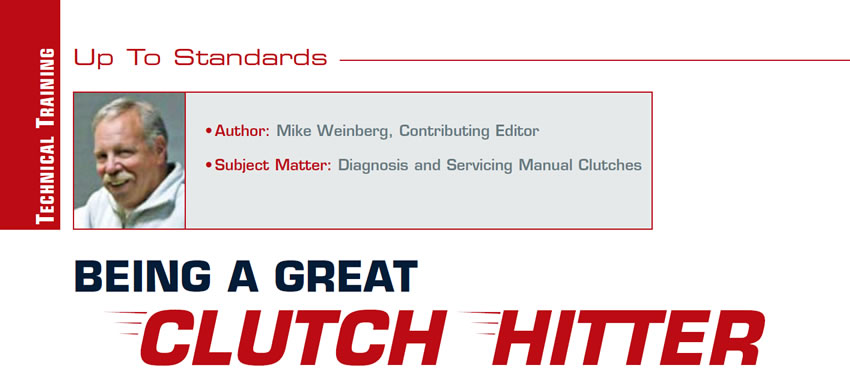Information: The Keys to the Kingdom – or Getting It Right the First Time
Repairing, rebuilding and remanufacturing a transmission require many levels of skill. Proper diagnosis, adequate road testing and close, in-depth inspection are all required to ascertain what is not working and what needs to be fixed. All of this starts with INFORMATION.
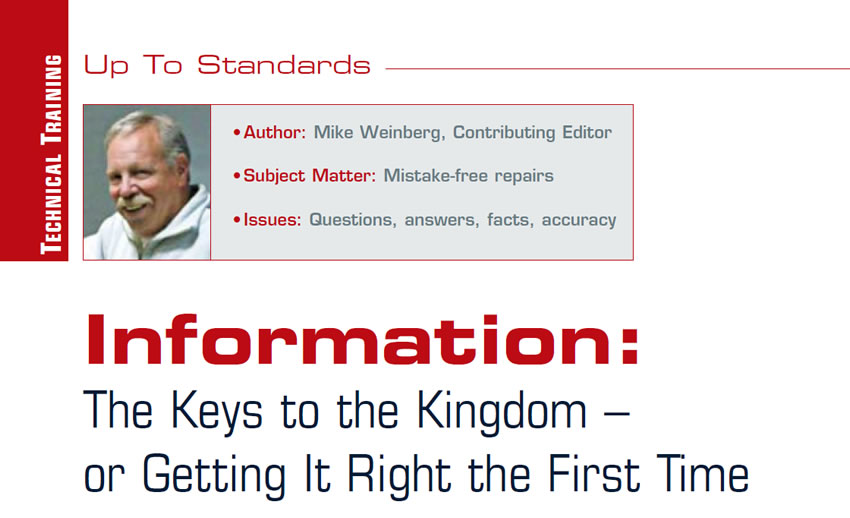
Is That The Best You Can Do?
Selling value is easy once you’re in the habit. Here are some great ways to start (if you’re new, or a veteran who could use a tune-up)…

April 2015 Issue
In This Issue
Lexus A761E Short Term CB
BMW Transfer Case Repair
Focus Shifting Issues
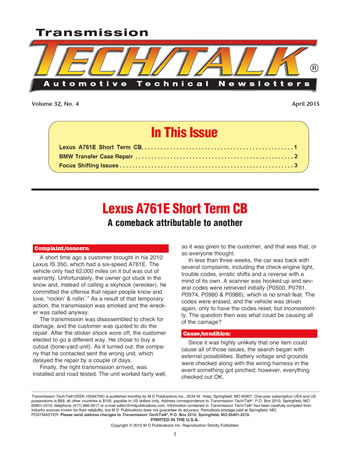
Snow plowing = BW 44-44 transfer-case failures
Experience we gain from solving problems generated in the transmission repair industry sheds light on various common failures and allows us to see trends that provide new products to solve design issues.
From 2011 on, Dodge has offered Ram 1500 pickup trucks equipped with the BW 44-44 transfer case. The 44-44 transfer case is a computer controlled “active” full-time transfer case.
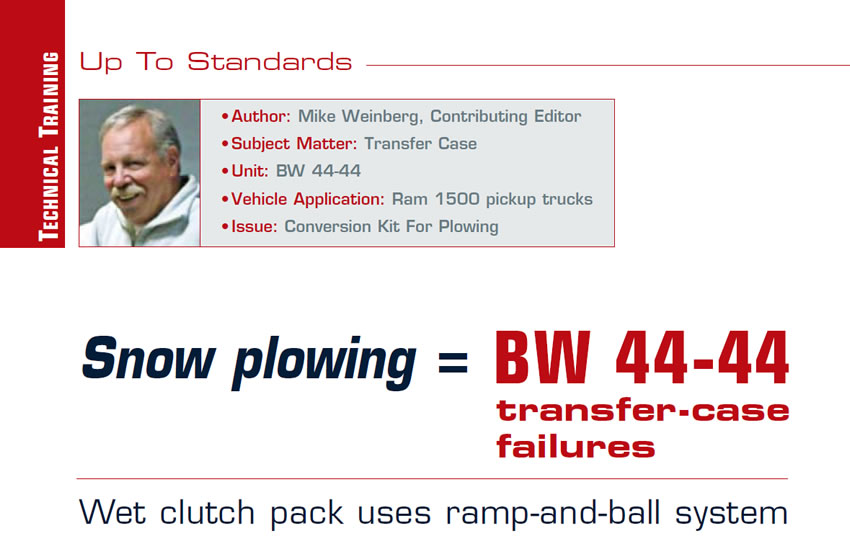
Adapt & Overcome
The TCM is responsible for monitoring and controlling transmission operation through the use of various sensors, solenoids, relays, switches, etc. Computer management provides benefits such as precise shift timing, fault detection and increased fuel economy. But a more remarkable feature is the TCM’s ability to compensate for changes in engine performance, vehicle load, driving patterns and physical wear inside the transmission by adapting its control tactics.
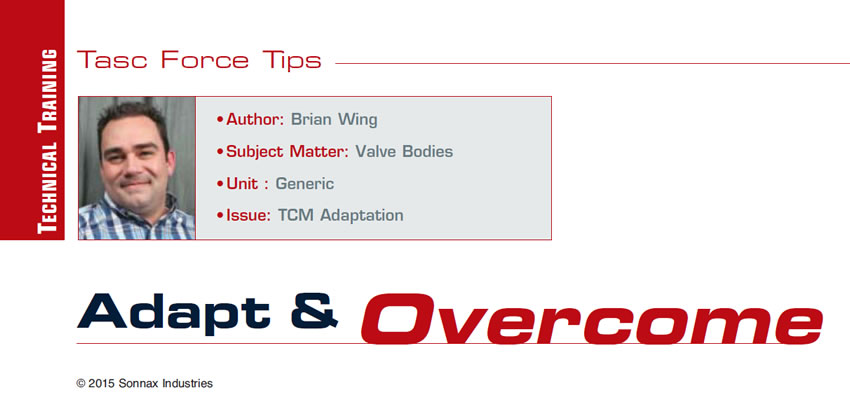
Transmissions with Mechatronics – TEHCM
For decades, the transmission repair industry has dealt with unending changes, ranging from weight (cast iron versus aluminum cases/components), fluids (natural versus synthetic blends) and sealing components to unit controls/calibrations.
Due to the ’70s oil fiascoes, the push for more gears, lighter units, less torque converter slippage, etc., all to enhance vehicle fuel economy and engine performance, has been growing exponentially over time. Add in a multitude of OE manufacturers and transmission designs, and the aftermarket repair industry has been faced with overcoming various obstacles just to repair a transmission.
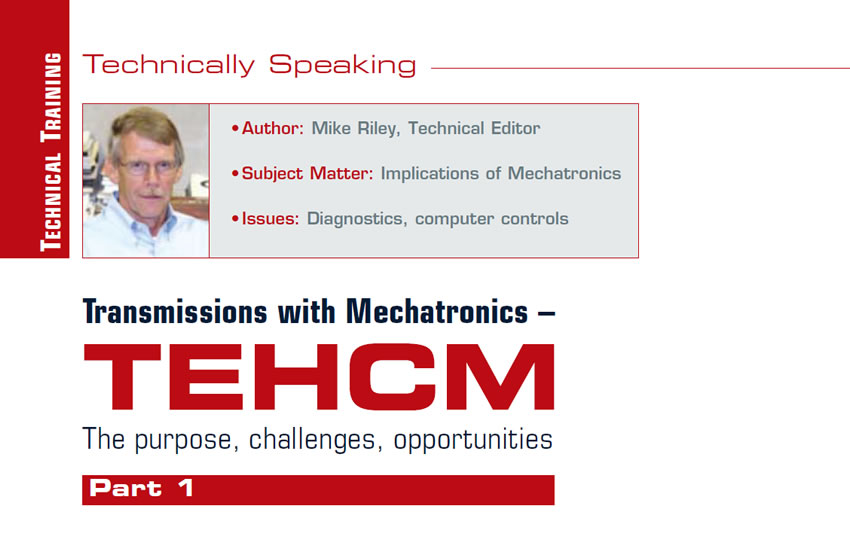
Serviceability Report: Honda Fit
This month, we will examine the 2015 Honda Fit and see what happened when it was redesigned recently. The Fit went on sale in the U.S. on April 20, 2006 as a 2007 model-year car. The first-generation Fit was replaced after only two model years by a new 2009 model and again in 2014 as a 2015 model. We will compare a 2009 to the new 2015.
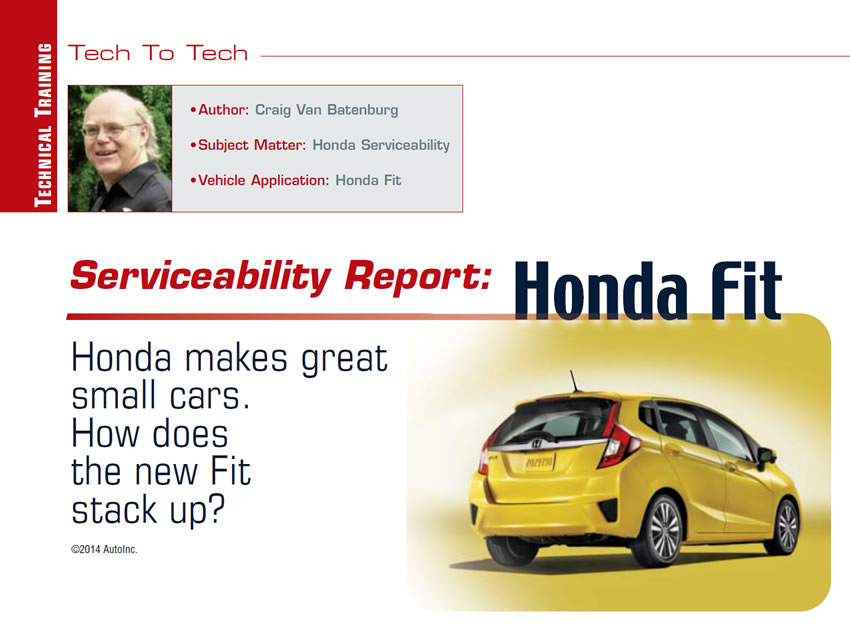
Outta Sight!
We’ve all had to chase intermittent vehicle issues. What makes them so challenging is that you can’t fix what you can’t see. Sure enough, it always seems that the concern disappears when you’re trying to diagnose the issue in your bay.
This story is a similar case. We were diagnosing a 2002 Dodge Grand Caravan with a 604 transmission and 3.8L engine. Six months prior, the vehicle owner contacted us and said that the transmission would not shift and was starting off in 2nd gear. By the symptom description, the unit was likely going into failsafe mode. We scheduled an appointment, but the customer was a no-show.
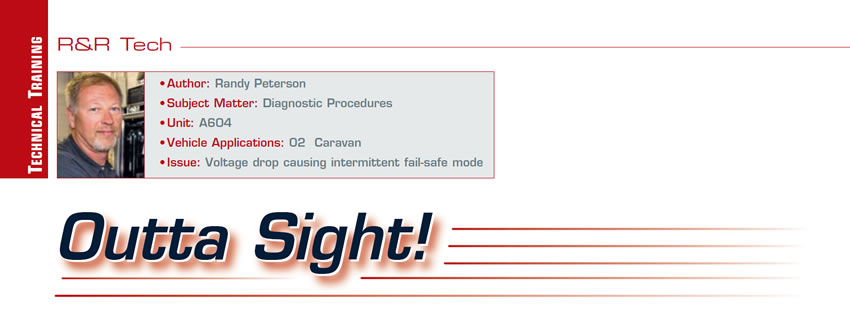
Quitters, Campers and Climbers
Team building is a job that a transmission-shop owner has to do well if he is going to have any success – now or in the future. You see, if your employees can’t sell it and fix it, you are not going to last long in this industry. A transmission shop will pick your pocket quicker than anything you can imagine if you don’t know what you are doing. The problem is that employees come and go. That is just a fact of life. Recruiting the right employees is the key to your success now and, the key to any continued success you might hope to have in the future. At the end of the day, we are selling high-dollar labor to our customers. It is your number-one responsibility to recruit and hire the best employees you can find.

TRUTH OR DARE
The other day while waiting for one of the forever traffic lights they have here to turn green I started studying the sign posted just outside the office of the automotive shop on my left. It read, “WE WILL BEAT ANY WRITTEN ESTIMATE BY 20-40%.” Really? What does that mean? Will they write their own estimate that’s 20-40% less, but is that just what they will write, not what they will charge? Will they just knock 20-40% off whatever the other estimate was? Will they actually do the job for that much less? Will they provide the same kind of quality for such a lower price if indeed they will ever actually sell the job at the lower price they are going to quote, or will they tell the customer who walks in after reading that sign that it only applies to certain types of cars or jobs and that his isn’t one of them?
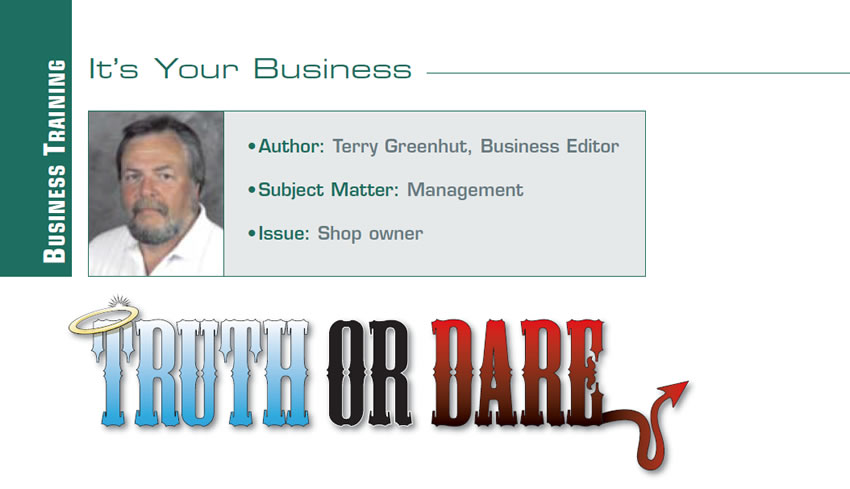
7 Ways to Onboard a Rockstar
When you hire a new guy or gal, your job isn’t done when they walk in the door. In fact, it’s just starting.
So how do we ensure the newest person on our sales crew is ready to be a rockstar for our customers? Here are 7 ways…
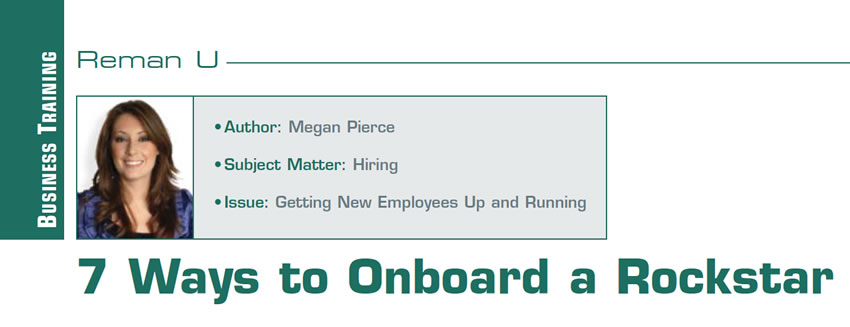
BEING A GREAT CLUTCH HITTER
Clutch replacement has always been a steady source of business in the transmission repair shop. More and more general repair facilities are swapping clutches to add to their cash flow. There are a number of OEM quality clutch replacement sets available in the marketplace from LuK, Daikin/Exedy, Valeo, Sachs, etc. that provide OEM parts at reasonable prices. No matter how good the parts are that you are using, the installer has the responsibility for a thorough, proper installation. Anytime a manual trans is removed from the vehicle, the clutch also should be removed and inspected. A few more minutes of labor can produce added revenue from the job, decrease the chances of warranty problems, and ensure that the clutch was not the cause of the transmission failure. It is very important to make sure that the clutch is capable of transferring all of the engine torque to the transmission, and that when the clutch is disengaged there is a complete disconnect of the transmission from the engine torque. A slipping clutch will damage the clutch friction components, a clutch that does not release completely causes notchy, grinding shifts and does immediate damage to the synchronizer and speed gear components in the transmission.
